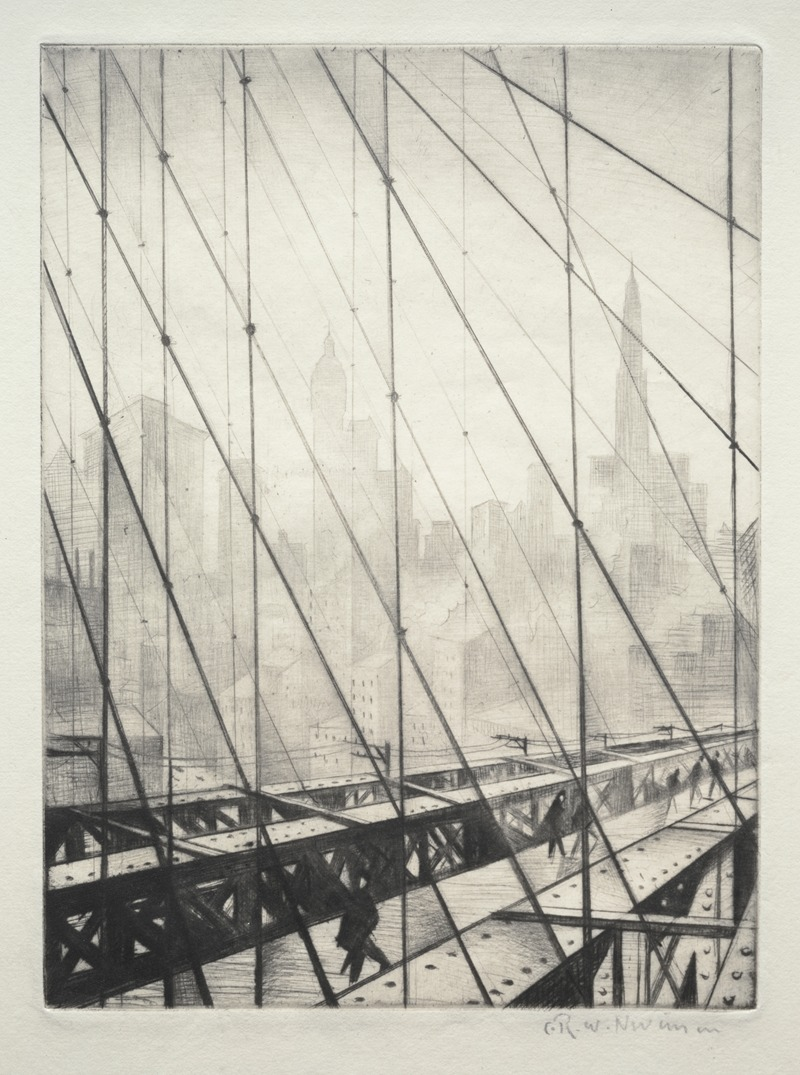
Emily Warren Roebling: Brooklyn Bridge Engineer & Beyond
Summary
Emily Warren Roebling played a crucial role in the construction of the Brooklyn Bridge, stepping in under extraordinary circumstances to oversee its completion. Despite no formal engineering training, her intellectual acumen and resilience broke gender barriers in a male-dominated field, leaving a lasting impact on engineering. Roebling’s involvement is a testament to her determination and the breaking of societal norms, showcasing her as a pivotal figure in engineering history and an inspiration for challenging gender roles.
Reflection Questions
- Despite having no formal training in engineering, Emily Roebling stepped up to lead the completion of the Brooklyn Bridge. Have you ever been underestimated based on assumptions about your gender, education, or experience? How did you prove those assumptions wrong?
- Roebling’s determination and resilience were key to her success. Reflect on a challenge you’ve faced that required resilience. What kept you going, and what did you learn about yourself in the process?
- Emily Roebling’s involvement in the Brooklyn Bridge construction challenged societal norms of her time. What norms related to gender and work do you see being challenged today? How can you contribute to or support these changes?
Journal Prompt
Inspired by Emily Roebling’s lasting impact not only on engineering but also as a symbol of breaking gender barriers, think about the legacy you wish to leave in your own field or community. What are the values or contributions you want to be remembered for? How can you start building towards that legacy today, and what challenges do you anticipate facing? Detail actionable steps you can take to ensure your work and spirit leave a mark as indelible as Roebling’s on the Brooklyn Bridge.
Emily Warren Roebling is a notable figure in engineering history—best known for her critical role in the construction of the Brooklyn Bridge—a symbol of architectural ingenuity and endurance. In this article, we will examine the life and work of Emily Warren Roebling—exploring her unforeseen yet pivotal involvement in one of the most iconic engineering feats of the 19th century. We will trace her journey from her early life—through the extraordinary circumstances that led her to become an integral part of the suspension bridge construction, to her lasting impact on the field of engineering and beyond. Roebling’s story is not just about the successful completion of a monumental structure. It is a testament to resilience, intellectual acumen, and the breaking of gender barriers in a field dominated by men—leaving a legacy that continues to inspire and challenge societal norms. Read on to learn more about Emily Roebling and her incredible contributions to the New York skyline and beyond.
Early Life and Education

Emily Warren Roebling was born on September 23, 1843, in Cold Spring, New York, into a family that valued education and intellectual development. She was the second youngest of twelve children in the Warren household—a family with a strong military tradition.
Her upbringing in this environment was marked by a combination of traditional values and an encouragement towards education, which was somewhat unusual for girls during that era. This early environment played a critical role in shaping her character—imbuing her with a sense of determination and intellectual curiosity that would later define her contributions to the Brooklyn Bridge project.
Emily’s education was more comprehensive than that typically afforded to women of her time. She attended the Georgetown Visitation Convent in Washington, D.C., where she received an education that—while focusing on traditional subjects for women—also encouraged her to engage with a broader range of intellectual pursuits.
Her studies included a variety of topics—from literature and history to more rudimentary exposure to the sciences. This well-rounded education not only equipped her with a broad knowledge base but also fostered critical thinking skills, which would prove essential in her later work on the Brooklyn Bridge.
In the mid-19th century, societal expectations for women were largely confined to domestic roles, with limited opportunities for higher education or professional careers. Women were expected to focus on homemaking and child-rearing, with intellectual pursuits deemed unnecessary or even inappropriate.
Emily Warren Roebling—however—defied these norms. Her strong educational background and her later involvement in the Brooklyn Bridge project were far from typical for women of her era. This defiance of societal expectations was not only a personal achievement but also a statement against the gender norms of her time.
Emily’s role in the Brooklyn Bridge project later in her life was a direct challenge to the prevailing beliefs about women’s capabilities and roles—marking her as an early and significant figure in the struggle for gender equality—particularly in fields traditionally dominated by men.
Involvement in the Brooklyn Bridge Project
The Brooklyn Bridge began construction in 1869 and was one of the most ambitious projects of its time. The bridge—designed to connect Manhattan and Brooklyn over the East River—was envisioned by John Roebling, who was a renowned civil engineer.
After his untimely death, his son—Washington Roebling—took over as the chief engineer. Washington—an accomplished engineer in his own right—was tasked with bringing his father’s visionary design to fruition—a challenge that would test the limits of 19th-century engineering and construction techniques.
Circumstances Leading to Emily Warren Roebling’s Involvement in the Project

Emily Warren Roebling’s involvement in the Brooklyn Bridge project was a consequence of unexpected circumstances. Initially, her role was that of a supportive spouse—taking an interest in the project but not directly involved in its operations.
However, the situation changed drastically when Washington Roebling suffered a debilitating illness caused by decompression sickness—also known as “the bends” —which he contracted while working in the pressurized caissons under the river. His illness left him physically incapacitated and unable to be present at the construction site—creating a critical void in the project’s leadership.
Fuel your creative fire & be a part of a supportive community that values how you love to live.
subscribe to our newsletter
*please check your Spam folder for the latest DesignDash Magazine issue immediately after subscription

Her Husband Washington Roebling’s Illness and Her Transition into the Role of an Intermediary and Key Figure in the Bridge’s Construction
Roebling’s illness had a profound impact on the continuation of the Brooklyn Bridge project. Confined to his home, her husband Washington Roebling was unable to directly oversee bridge construction or communicate effectively with his staff and the project’s stakeholders. Recognizing the gravity of the situation after her husband fell ill, Emily stepped into an active role—serving as the crucial link between her husband and the outside world. She diligently learned complex engineering principles and construction details to effectively communicate Washington’s instructions and guidance to the team on-site.
Emily’s transition to this role in the creation of this suspension bridge was not merely administrative. She became deeply involved in the technical aspects of the project—gaining enough knowledge to make informed decisions and provide critical input. Her dedication and intelligence were evident as she navigated the intricacies of the construction, dealt with engineers, workers, and politicians, and advocated for the continuation and success of the bridge.
Emily Warren Roebling effectively became the de facto chief engineer—ensuring the project’s progress despite her husband’s illness and the societal challenges of her assuming such a prominent role in a male-dominated field.
Roebling’s Contributions to the Bridge

Emily Warren Roebling’s contributions to the Brooklyn Bridge were multifaceted and critical to its completion. Stepping into a role that was unprecedented for a woman of her time, she not only bridged the gap between her bedridden husband and the construction site but also played a significant part in decision-making processes.
Emily’s involvement went beyond mere conveyance of messages; she engaged in discussions with engineers, provided insightful solutions to construction challenges, and managed complex logistical issues. Her ability to grasp technical details and effectively communicate them played a crucial role in keeping the project on track amid skepticism and challenges.
Discussion of Her Self-Education in Civil Engineering Concepts and Principles
Faced with the daunting task of overseeing a major engineering project, Emily embarked on a journey of self-education. She diligently studied civil engineering concepts—immersing herself in the technical aspects of the bridge’s design and construction.
Emily learned about cable construction, stress analysis, materials strength, and the intricacies of suspension bridges. This self-directed learning enabled her to understand the engineering challenges of the project and to converse knowledgeably with the engineers and workers. Her ability to comprehend and apply engineering principles was a testament to her intellectual capabilities and adaptability.
Description of Her Day-to-Day Responsibilities
Emily’s day-to-day responsibilities in the Brooklyn Bridge project were extensive and critical. She served as the main communicator between Washington Roebling and the construction team—relaying technical instructions and feedback. Emily regularly visited the construction site, where she observed operations, oversaw progress, and gathered information to report back to her husband. She also attended meetings with engineers, city officials, and stakeholders—effectively advocating for the project and negotiating solutions to arising issues.
Moreover, Emily dealt with the administrative side of creating this everlasting monument—handling correspondence, keeping records, and managing various project documentation. Her role required her to be both detail-oriented and strategic—ensuring that the construction progressed smoothly and according to plan. Emily Warren Roebling’s day-to-day involvement in the Brooklyn Bridge project was not only instrumental in its successful completion but also groundbreaking in demonstrating a woman’s capability in managing a major engineering endeavor.
The Brooklyn Bridge opened 24 May 1883, and likely would never have been completed without Emily Roebling’s contributions.
Challenges and Triumphs

Emily Warren Roebling faced numerous challenges during her work on the Brooklyn Bridge, which extended beyond the technical complexities of the project. Societal prejudices of the late 19th century posed a significant obstacle. As a woman in a male-dominated field, Emily had to navigate skepticism and bias from those who doubted her abilities to understand and contribute meaningfully to the engineering aspects of the bridge. This skepticism was not just from external observers but sometimes from those within the project team—making her role even more challenging.
Moreover, the technical hurdles associated with the Brooklyn Bridge were formidable. The project was pioneering in its scope and engineering methods, and managing the construction of what would be the world’s longest suspension bridge at the time required a deep understanding of engineering principles—something Emily had to learn and apply on the job. The physical construction challenges—such as working with caissons and dealing with the unpredictable East River, added further complexity to her role.
Despite these challenges, Emily Warren Roebling’s determination, intelligence, and adaptability were key in overcoming them. She educated herself in engineering concepts—demonstrating not only an understanding of the technical aspects of the bridge but also the ability to apply this knowledge effectively. Her diplomatic skills were crucial in managing the diverse range of personalities and expectations involved in the project. Emily’s perseverance in the face of doubt and her ability to maintain her composure under pressure were instrumental in gaining the respect and trust of the engineers and workers on the project.
Emily Warren Roebling’s triumphs in the Brooklyn Bridge project were marked by several key moments. Perhaps the most significant was the successful completion of the bridge in 1883. Her direct involvement and leadership over more than a decade played a critical role in realizing this engineering marvel. The opening of the Brooklyn Bridge was not just a triumph of engineering. It was a personal victory for Emily—symbolizing her resilience and capability.
Additionally, her successful navigation of the societal and technical challenges established her as a pioneering figure in engineering—particularly for women. The recognition she received—both during and after the bridge’s completion—underscored her achievements and cemented her place in history as an instrumental figure in the construction of one of the most iconic landmarks in the United States.
Life After the Brooklyn Bridge
After the completion of the Brooklyn Bridge in 1883, Emily Warren Roebling’s life took a turn towards further personal and intellectual development. Having demonstrated her capabilities in a predominantly male domain, she did not rest on her laurels but continued to pursue her interests and advocacies. Her post-bridge life reflected a broadening of her focus from engineering to wider social and educational issues—particularly those concerning women’s rights and education.
Emily’s achievements following the bridge project were marked by her continued pursuit of education and advocacy for women’s rights. She enrolled at New York University, in their Woman’s Law Class—an early legal education program for women—and received a certificate of completion—an impressive feat considering the limited opportunities for women in higher education at the time. Her interest in law was more than academic; it was part of her broader engagement with issues of social justice—particularly those affecting women.
Emily Warren Roebling also became involved in numerous social organizations and clubs. She was active in the Daughters of the American Revolution and participated in various women’s suffrage movements. Her writings during this period—including essays and presentations—reflect her intellectual depth and commitment to women’s rights. In these works, she often articulated her views on the potential of women to contribute significantly in various fields—drawing on her own experiences as an example.
Her contributions post-Brooklyn Bridge solidified her role as a pioneer not only in engineering but also as an advocate for women’s education and rights. Emily Warren Roebling’s life after the bridge project was characterized by her unwavering commitment to learning, advocacy, and social engagement—marking her as a multifaceted figure whose impact extended well beyond the realm of engineering.
Legacy and Impact
Emily Warren Roebling’s legacy in the fields of engineering and women’s rights is multifaceted and enduring. Her contribution to the construction of the Brooklyn Bridge stands as a testament to her technical acumen, problem-solving skills, and determination. Her work challenged the prevalent gender norms of the 19th century—demonstrating that women could contribute significantly to complex engineering projects. This was a groundbreaking development in a field that was—and still is—predominantly male-dominated.
In terms of women’s rights, Emily’s legacy is equally significant. She emerged as a role model for women’s involvement in scientific and technical professions. Her success in a male-dominated field provided a tangible example that women were capable of mastering and contributing to the sciences and engineering. Her life and work became a source of inspiration—showing that societal barriers could be overcome with determination and intellect.
How Her Work Influenced Future Generations, Especially Women in STEM
Emily Warren Roebling’s influence extends to future generations—particularly in encouraging women to pursue careers in STEM (Science, Technology, Engineering, and Mathematics). Her story is a beacon for women and girls interested in fields traditionally viewed as beyond their scope. It underscores the importance of perseverance and self-belief in the face of societal challenges and prejudices.
The path she carved has inspired women engineers, scientists, and leaders to pursue their ambitions in STEM fields. Her story is often cited in discussions about increasing the representation of women in engineering and technology—serving as both a historical example and a contemporary motivator. The recognition of her work has helped in ongoing efforts to dismantle gender stereotypes and promote gender equality in STEM professions.
Final Thoughts on the Life and Work of Brooklyn Bridge Engineer Emily Warren Roebling

Historically, Emily Warren Roebling’s contributions were not immediately recognized as pioneering due to the gender biases of her time. However, as perspectives on women’s roles in society and professional fields have evolved, so too has the recognition of Emily’s work. In modern contexts, she is celebrated not only as a key figure in the completion of the Brooklyn Bridge’s construction but also as a trailblazer for women in engineering and other technical fields.
Today, Emily Warren Roebling is acknowledged in various forms—including in literature, educational materials, and commemorations at the Brooklyn Bridge itself. This recognition is a reflection of society’s growing appreciation of the contributions of women to fields from which they were historically excluded. Emily’s legacy continues to resonate—serving as both a historical milestone and a continual source of inspiration for gender equality and empowerment in STEM and beyond.
Should we rename the Brooklyn Bridge the Roebling Bridge?
Design Dash
Join us in designing a life you love.
15 Considerations for Selecting Decorative Objects for Client Installs
From avoiding strong scents to using reflective surfaces sparingly, here are 15 tips for selecting decorative objects during client installs.
Why Would You Change Your Firm’s Business Structure?
Should you change the legal structure of your business as it expands? Here are eight reasons why owners change their business structure.
Top Interior Design Certifications for Advancing Your Career
LIKE 0 LEAVE COMMENT 0 10 min read SummaryReflection QuestionsJournal PromptIn interior design, certifications are the key to elevating your career from ordinary to extraordinary. These credentials offer more than just fancy acronyms for your business card – they’re your gateway to bigger projects, higher paychecks, and the professional recognition that makes clients take notice.…
How to Publish an Interior Design Portfolio
LIKE 0 LEAVE COMMENT 0 13 min read Summary Reflection Questions Journal Prompt In interior design, your portfolio is your golden ticket. It’s the showcase of your creative genius that can open doors to dream clients and coveted projects. Whether you’re a fresh graduate ready to make your mark or a seasoned pro looking to…
Becoming an Interior Design Influencer
LIKE 0 LEAVE COMMENT 0 16 min read Summary Reflection Questions Journal Prompt Have you ever scrolled through Instagram, admiring perfectly styled living rooms and dreamy bedrooms, thinking ‘I could do that’? You’re not alone. Many design enthusiasts dream of turning their passion for beautiful spaces into a thriving online presence. But how does one…
How to Choose a Studio Location as an Interior Design Firm
Choosing the right interior design studio location signals your intent and describes your brand to potential clients. Here’s how to pick.








